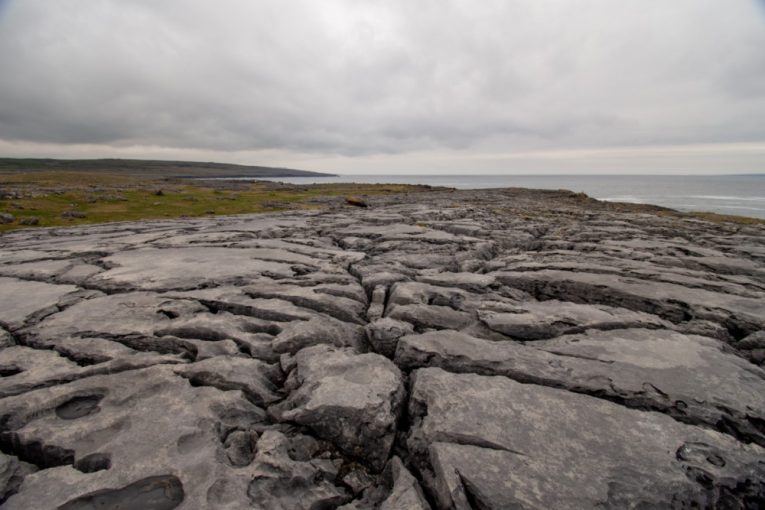Stress Release in the Burren
26.11.2021One of the most striking features of the Burren are the vertical cracks or fissures in the limestone. They are known as ‘grikes’ although I prefer the local term ‘Scealps’. For most people they are just the things you have to step over, however they initially formed as fractures almost 300 million years ago. At that time, we were down near the equator and the tectonic plates on Earth were colliding to form one supercontinent called Pangea. This slow collision built up huge stresses in the rocks which eventually fractured, releasing the stress. This is the same process by which Africa is colliding with Europe right now and causing Earthquakes throughout southern Europe, most recently in Croatia. This is all part of the journey of the tectonic plates that make up the Earth’s crust as they move around on their merry slow dance through geological time. This fracturing in the Burren limestone opened millions of thin vertical gaps (mostly oriented nearly North -South) which were then filled by fluids which had been trapped at depth under enormous pressure. These fluids crystallized in the gaps forming thin mineral veins, mostly of calcite, which effectively sealed the fractures. These fractures remained buried and sealed until the rock was brought to the surface and exposed to the potent force of…rain, which slowly dissolves the veins and limestone, particularly under acidic soils.

A second set of fractures (mostly oriented East-West) formed much later as the rocks that buried the limestone were removed by erosion on our long journey from the equator to here. We know that at least a couple of kilometres of rock have been eroded over the last 300 million years. Removing that huge weight also released further stresses which caused the rocks to fracture. Finally, a third stress was caused by the weight of thick ice sheets on the limestone surface during the ice age. This weight pressed down on the rock surface building up new stresses which were released after the ice melted, forming new fractures which are mostly horizontal. So the fractured surface of the Burren is all about stress release. Next time you are there, just relax.
Find out more about the Story of the Burren here.
Dr. Eamon Doyle, geologist for the Burren and Cliffs of Moher UNESCO Global Geopark, Clare